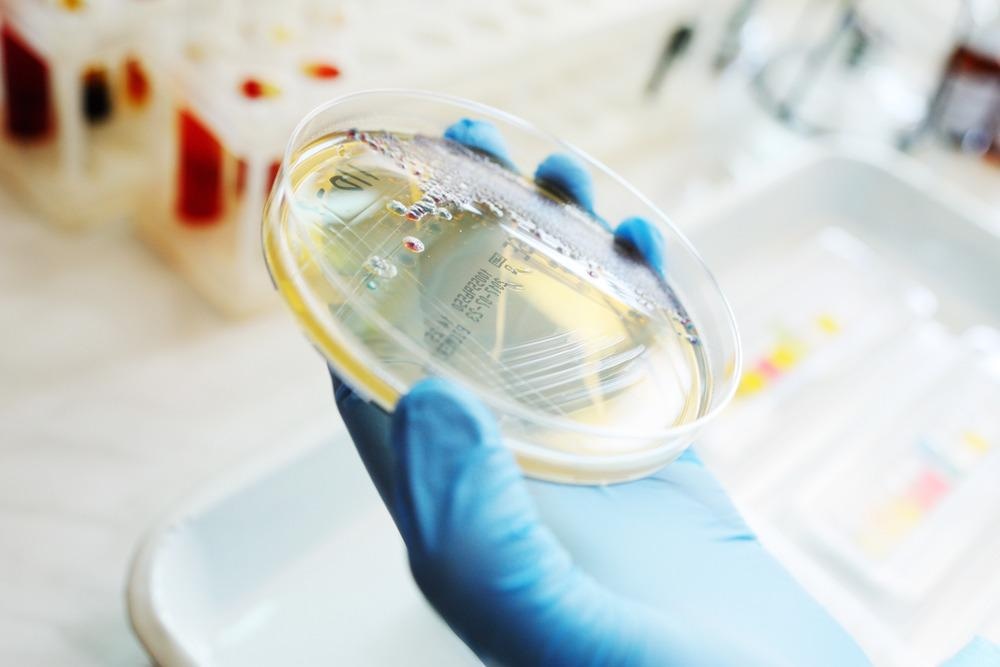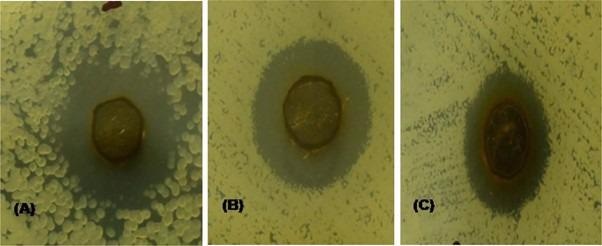A bottom-up approach to produce copper oxide (CuO) nanoparticles on hydrophilic graphene oxide (GO) nanosheets has been employed in the latest research published in Journal of Material Science: Materials in Medicine.

Study: Wet chemical development of CuO/GO nanocomposites: its augmented antimicrobial, antioxidant, and anticancerous activity. Image Credit: Evgeniy Kalinovskiy/Shutterstock.com
The CuO/GO nanocomposite was created by combining two different predecessors, copper nitrate and citric acid, with occasional mixing of GO solutions.
Importance of Copper Oxides
Copper Oxide (CuO) nanoparticles have experienced an accelerated surge in many potential applications due to their direct bandgap nature, strong electrochemical performance, and cheaper cost of manufacture. Cuprous Oxide (Cu2O) and Cupric Oxides (CuO) are the two most common forms found in nature, comprising the two most important stoichiometric compounds in the CuO systems as a whole.
They have a broad array of applications, including hydrogen gas sensors, volatile organic molecules, hydrolysis, and, most notably, solar photovoltaic cells. Because of their extensive applicability in electrolytic and smart appliances, the production of CuO nanoparticles in the laboratory is critical.
Limitations of Copper Oxide Nanocomposites
Although the usage of copper oxide nanoparticles (CuO NPs) in many applications has expanded tremendously, there are numerous restrictions to their use.
The complications that arise as a result of misinterpreting the toxicity are based on the fact that CuO nanoparticles bind, interact with living cells, and cause a change in surface properties. The toxic effects of nano-sized CuO on neurons cause cognitive dysfunction, which affects memory and learning aspects. CuO NPs has a negative impact on the structure of many organs, as observed in histological examinations.

HR-TEM of CuO/GO nanocomposites indicating the CuO deposits over GO sheets (indicated by arrows) © Biswas, K. et al., (2021)
Importance of Graphene Oxide Nanosheets
Graphene Oxide (GO) nanosheets are hydrophilic in nature due to the accessible oxygen groups linked to the structure, as well as the accessible defect properties, which make the GO nanosheets ideally soluble in water for various applications.
GO-based nano screens have found extensive applications in gas barrier nanocomposites due to their high dimensional nanosheet composition, which provides remarkable insulative properties to most gases. Because of their higher moisture permeability, GO nanosheet films are widely considered as promising nanomaterials for water treatment applications.
The orientated GO nanosheets inflate when water enters between them because GO films have a significant attraction for water. In addition, due to their shape and great chemical stability, graphene derivatives show potential for anti-corrosive polymer coatings.
Research Findings regarding Antibacterial Activity
The antimicrobial property of CuO/GO nanocomposite was investigated preliminary using the agar well diffusion (AWD) technique. The latest research reveals that CuO nanoparticles demonstrated extensive antimicrobial properties against Gram-positive and Gram-negative pathogens.
It was discovered that nanomaterials penetrate the cell wall of bacteria due to their sticking capability, consequently affecting the integrity of the structure of the bacterial surface and resulting in permeation into the bacteria, resulting in cidal activity of the bacterial cells.
The penetrated nanoparticles inside the bacteria generate net reactions with essential biomolecules like proteins and nucleic acids, resulting in the generation of reactive oxygen species (ROS) radicals, which cause cellular stability deterioration and death of hazardous cells.

Antibacterial activity in agar well diffusion method (A) E. coli (B) S. aureus (C) P. aeruginosa. © Biswas, K. et al., (2021)
Findings Regarding Antioxidant Activity
The antioxidant properties of nanocomposites were evaluated. CuO/GO nanocomposites were added to the culturing of A-431 cancerous cells at varying doses (0.97 nM to 1000 nM) for 24 hours at 37 °C. It was discovered that when the concentration of the CuO/GO nanocomposites increased, the proportion of viable cancer cells appeared to decrease concurrently.
Results demonstrated that ROS generation during cell functions, which occurs after being exposed to the test sample, plays an important part in the mechanism of cytotoxicity of CuO/GO nanocomposites in epidermoid cancer. For CuO/GO nanocomposite, the IC50 value was 44.86 ± 1.74 μg/ml, indicating significant antioxidant potential.
Antioxidant activity of CuO/GO nanocomposite in terms of radical scavenging activity (A) DPPH and (B) ABTS.
In short, when evaluated in-vitro, the nanocomposites showed great antibacterial and antioxidant ramifications, making it part of the nanocomposites' therapeutic action. The produced nanocomposites had an average particle size of around 20 nm, which was large enough to evoke biological activity when evaluated. These properties open doors to further evaluate their applications for various purposes.
Continue reading: Antiviral Activity of Intermetallic Nanoparticles Incorporated into Polymeric Fibers.
Reference
Biswas, K. et al., (2021) Wet chemical development of CuO/GO nanocomposites: its augmented antimicrobial, antioxidant, and anticancerous activity. Journal of Materials Science: Materials in Medicine, Volume 32. 151. Available at: https://link.springer.com/article/10.1007%2Fs10856-021-06612-9
Disclaimer: The views expressed here are those of the author expressed in their private capacity and do not necessarily represent the views of AZoM.com Limited T/A AZoNetwork the owner and operator of this website. This disclaimer forms part of the Terms and conditions of use of this website.